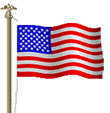


![]() DE387
DE387
![]() WDE487
WDE487
![]() DER387
DER387

|
These pages encompass USS Vance 1943 - 1985
The following information is taken from Dictionary of American Fighting Ships Vol. VII (1981) Contributed by John Johnson On 1 June 1958, the radar picket escort ship's home port was changed to Pearl Harbor and she began operating with CortRon 7. One month later, she departed Hawaiian waters for a 29 day patrol on the mid-ocean picket lines which provided radar coverage from Alaska to Midway Atoll. Vance thus became the first ship on the Distant Early Warning (DEW) line in the Pacific and the first to sail under the newly organized Pacific barrier patrol. In mid January 1959, routine overhaul and refresher training at Pearl Harbor, Vance again took station on the mid Pacific stretch of ocean on her second DEW-line deployment.Vance continued to conduct regular DEW-line patrols until May of 1960, when CortRon 7 was dissolved. At that time, she rejoined CortDiv5 and served with her old unit into 1961. On occasion, the picket ship took Russian trawlers under surveillance-undoubtedly while the communist vessel was returning the compliment. Early in 1961, Vance's communications capabilities
were extensively augmented during an overhaul at Pearl
Harbor. After resuming DEW-line patrols late in the
spring, the ship received orders in August 1961
designating her an ocean station vessel with TF-43,
Operation "Deepfreeze 62." Temporarily based at
Dunedin, New Zealand, Vance served as a communication
relay ship for aircraft bringing in vital supplies to the
Antarctic stations from New Zealand. She remained on
station in the cold, bleak, southern waters into March
1962, when she headed home via Melbourne, Australia, and
Papeete, Tahiti, to Pearl Harbor. She soon resumed duties
on the DEW-line and--but for periodic interruptions for
maintenance, replenishment, and training-devoted herself
to the task of operating mainly off the Aleutian Islands
through February 1965. En route from Subic Bay to waters off the coast of Vietnam, Vance rescued Capt. Leland D. Holcomb, USAF, who had ejected from a burning F-100 Super Sabre fighter plane. Vance took station in Operation "Market Time" on 11 April 1965. From that day until the 24th, she operated near the 17th parallel as a part of Task Unit (TU) 71.1.1. During the assignment, she maintained communications between airborne Convair EC-121K Constellations and Commander, TU 71.1.1, in John W. Thomason (DD-760). Subsequently from 15 May to 4 June, Vance returned to "Market Time" surface surveillance - this time in the Gulf of Thailand near the border dividing South Vietnam from Cambodia. She operated in company with small minesweepers (MSO's) and embarked a Vietnamese Navy liaison officer to aid in the ship's "visit and search" activities.. She continued these activities until sailing for Hawaii early in September and arrived at Pearl Harbor on the 18th. Vance returned to "Market Time" station in mid January 1966, and then participated in Operation "Masher," the amphibious operation designed to clear northern Binh Dinh province of Viet Cong insurgents. Next moving to the Gulf of Thailand once more, the destroyer escort conducted close-support and logistics operations with Navy PCF's (swift boats) and Coast Guard WPB's in interdicting communist coastal supply traffic, often boarding 30 vessels per day.Underway on 11 April to patrol off Cap de Ca Mau, the southernmost tip of South Vietnam, Vance monitored coastal junk traffic and seagoing vessels, surveying traffic patterns in the South China Sea. Later, off Binh Dinh, she closed to investigate a trawler and came under fire from Viet Cong ashore. Although the ship's skin was pocked by bullets, Vance briskly returned the fire with her 3-inch battery, driving away or killing the unseen but pestiferous snipers. In a more humanitarian vein, Vance and a "Swift" rescued 56 men, women, and children from a swamped boat near Qui Nhon. For several hours, Vance's men cleaned and fed babies; made old women as comfortable as possible; and gave away blankets, towels, and food. Relieved by Haverfield (DER-393) late in July Vance headed for Hawaii and got as far as the San Bernadino Strait before she was ordered to return to Vietnam for further "Market Time" duty. On 6 August, Surfbird (ADG-383) relieved the destroyer escort on station and allowed Vance to sail again via the Philippines for Pearl Harbor. On 15 January 1967, Vance returned to the Far East for another 7th Fleet deployment and relieved Koiner (DER-331) off the mouth of the Saigon River. Once again, Vance's duties involved hunting for contraband carrying craft attempting to infiltrate from the north to deliver their cargoes to the Viet Cong. Vance tracked all ocean-sized vessels and stopped and searched junks and sampans--tedious and frustrating but vital work.The ship conducted two more "Market Time" patrols during her third WestPac deployment and, between missions, underwent a tender availability at Kaohsiung, Taiwan; rest and recreation at Hong Kong; and upkeep at Subic Bay. At the end of her last "Market Time" assignment, she patrolled the Taiwan Strait between communist China and Taiwan before returning to Pearl Harbor for routine overhaul. In late 1968, the ship began her final WestPac deployment in which her duties were similar to those of her third and fourth deployments. She subsequently returned to the west coast of the United States in July 1969 for inactivation. Placed in reserve, at the Inactive Ship Facility, Vallejo, Vance was decommissioned on 10 October 1969, struck from the Navy list on 1 June 1975, and scheduled to be used as a TARGET Vance received seven battle stars for service in Vietnam. |